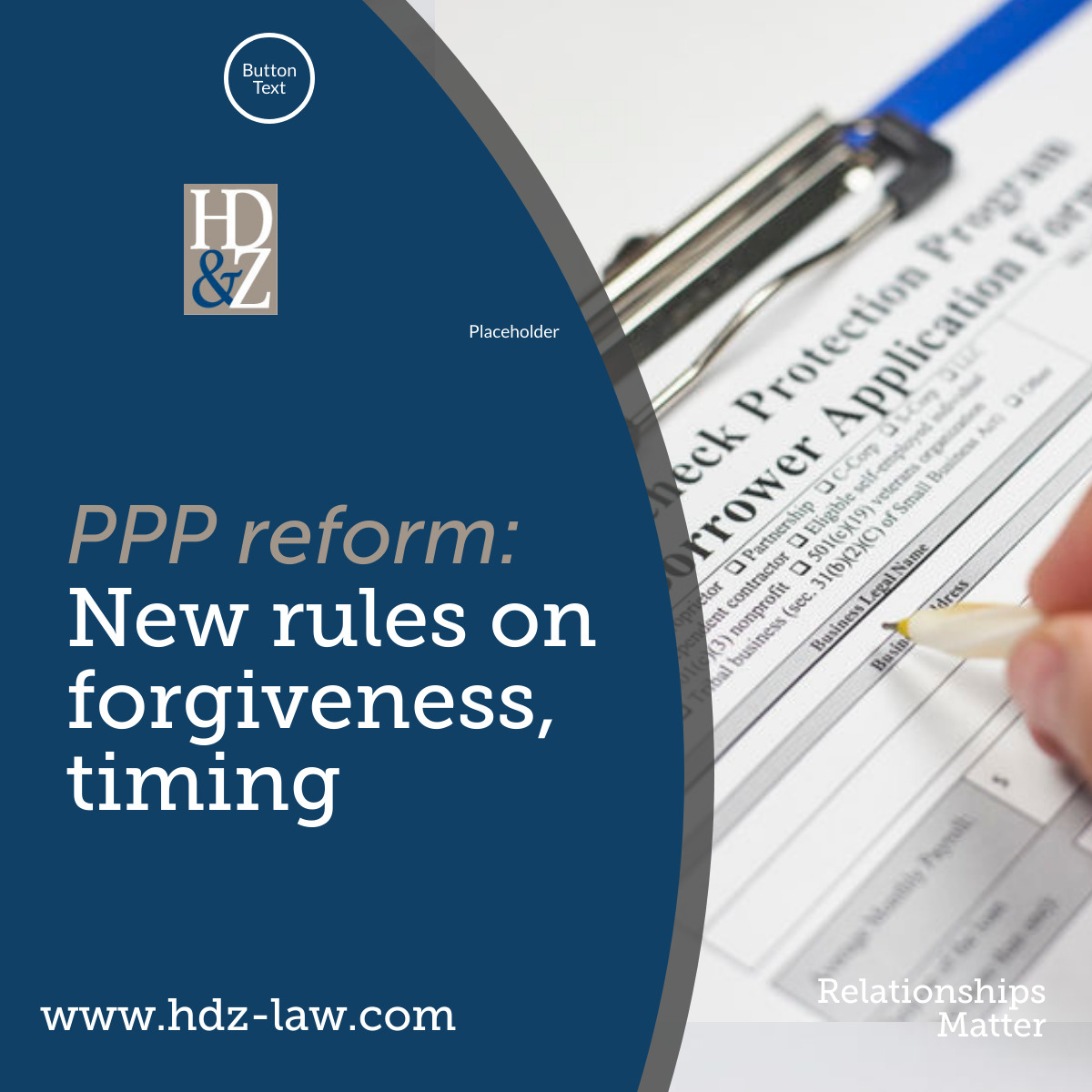
PPP reform: New rules on forgiveness, timing
Congress passed the Paycheck Protection Program Flexibility Act (“Act”) to make it simpler for small businesses and other borrowers to qualify for full loan forgiveness. President Trump signed it into law on Friday, June 5, 2020. The Act extended the amount of time in which businesses can use their loans and offered more flexibility on how to spend funds. One item that did not change was the application deadline. The deadline to apply for Paycheck Protection Program loans was and remained June 30, 2020.
The U.S. Small Business Administration (SBA), in consultation with the Treasury Department, released in mid-June a revised loan forgiveness application for the Paycheck Protection Program (“PPP”). The SBA also released a new EZ application for forgiveness of PPP loans. To have their loan forgiven, small business owners must fill out an application, and submit it to the bank or lender that approved their initial request. The application focuses on criteria regarding the types of expenses that are forgivable. It also includes a step-by-step calculator for determining forgiveness eligibility.
The EZ application requires fewer calculations and less documentation than the full application and can be used by borrowers that, 1) are self-employed and have no employees; or 2) did not reduce the salaries or wages of their employees by more than 25% and did not reduce the number or hours of their employees; or 3) experienced reductions in business activity as a result of health directives related to COVID-19 and did not reduce the salaries or wages of their employees by more than 25%.
The Act transformed the PPP in the following ways by:
- Extending the deadline from June 30, 2020 to December 31, 2020 to rehire full-time equivalent employees for their salaries to count toward loan forgiveness.
- Reducing the proportion of the loan proceeds that businesses must spend on payroll to be eligible for full forgiveness. 60% of loan proceeds must be spent on payroll costs like salaries and benefits, for up to $100,000 annualized per employee, while the rest can be spent on other allowable expenses. The former payroll spending requirement for loan forgiveness was 75%.
- Extending the repayment period for non-forgiven PPP loans approved on or after June 5th to 5 years at 1% interest to repay the loan rather than the initial 2-year repayment period.
The maturity date can also be extended for loans made before June 5th if the borrower and lender mutually agree to extend it to 5 years.
- Expanding the duration of time (“covered period”) during which PPP recipients could spend the loan proceeds for payroll and non-payroll expenses and still qualify for loan forgiveness from 8 weeks from the time they received the first loan installment to 24 weeks or until December 31, 2020, whichever is first.
However, borrowers with loans taken before June 5th can still choose to use the 8-week covered period.
Payroll expenses include covered benefits for employees (but not owners), including health care expenses, retirement contributions, and state taxes imposed on employee payroll paid by the employer (such as unemployment insurance premiums). Non-payroll expenses include mortgage interest, rent and utilities. Loan proceeds not used for qualifying purposes within the covered period are not eligible for forgiveness and must be paid back.
- Specifying that loan forgiveness will not be reduced if there’s a reduction in headcount if borrowers can show that they were unable to rehire employees or hire similarly qualified employees for unfilled positions before December 31 or unable to resume normal business activity levels in that period because they were complying with health and safety guidelines for slowing the spread of the virus.
- Codifying an earlier ruling providing safe harbor for business owners who made a good-faith effort, but were ultimately unable to return to the same level of pre-February 15, 2020 business activity.
- Giving borrowers 10 months from the last day of the covered period, or alternative covered period, to apply for loan forgiveness.
- Deferring principal payments, interest, and fees until the final forgiveness decision is made between lenders and the SBA. Borrowers can defer payments for up to 6 months, and recently updated forgiveness guidance allots banks 60 days to review forgiveness applications. The SBA gets another 90 days to make a ruling. Accumulated delays would otherwise mean some business could start payments on a loan that would eventually be forgiven.
Allowing employers to defer their portion of payroll taxes. The Act strikes wording in the Cares Act that bars business owners who receive forgiveness on their PPP loans from deferring their payroll taxes. Taxes incurred in 2020 are to be paid in 2 installments: Half is owed by December 31, 2021, and the other half is owed by December 31, 2022.
For more questions on the Paycheck Protection Program Flexibility Act contact Dave Dewick at 920-430-1900.
